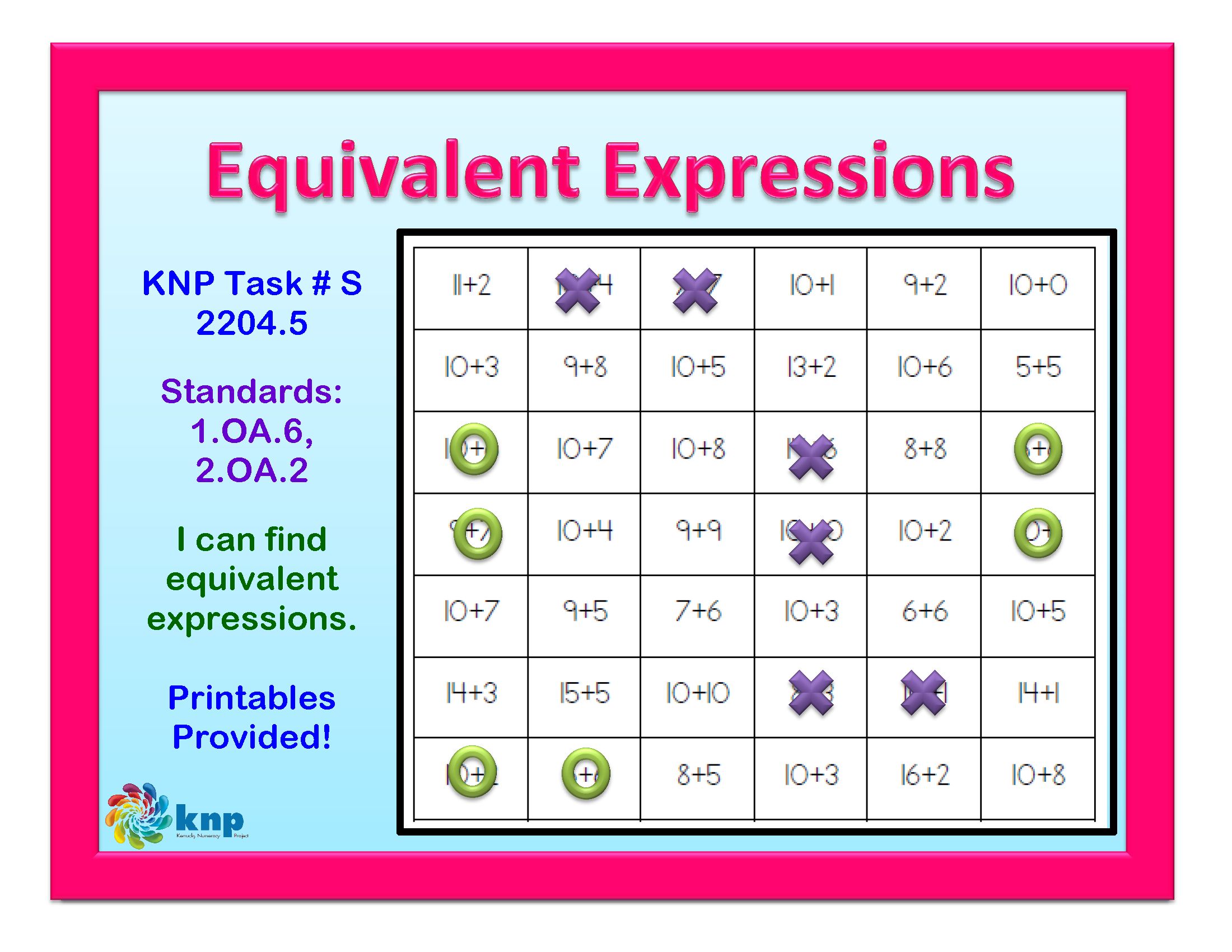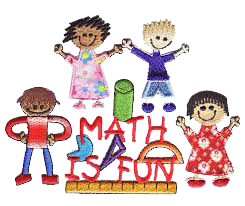“Equivalent Expressions”
KNPIG ID #S 2204.5
What's this activity about?
This activity is a great way for kids to see how they can combine different numbers to come up with the same total. Those pairs are equivalent expressions. You will be finding pairs together, as a race or independently. Counting on fingers, or making tally marks is a good way to learn addition and subtraction at first, but kids need to eventually develop more efficient ways to organize things in their heads. This activity encourages kids to use those new strategies so they can find equivalent expressions faster.
What materials do we need?
"Equivalent Expressions" game sheet (see link), sheet protectors, wipe off markers.

How do we play?
Make sure the game board is covered with the sheet protector and get a wipe off marker for each player. One player choose to mark x’s and the other o’s. Count down together to start- “3, 2, 1, Go!”
Each player will race to mark pairs that are equivalent (have the same total) with either X or O. For example 7+7 and 10+4 make a pair.
Play until all squares have been marked. The player with the most squares marked wins. Erase and print off a new board to play again.
Where’s the Math?
There is a lot of math in this activity that goes along with what your child is learning in school. Your child is learning how to easily add and subtract numbers within 20 using mental math strategies. They are working towards the goal of knowing all of these totals from memory by the end of second grade. Your child is also working with the new vocabulary terms- equivalent and expressions. Equivalent means having the same value. An expression is just a representation of a value, such as 2x3 or 5+4. Expressions do not have equal signs. They will be using these terms throughout their math education and it is important for them to have a good understanding of the meaning so they are able to confidently work through problems without getting stuck on math terminology.
Things to Think About:
As you play this with kids, remember to BE PATIENT. Sometimes it’s hard not to help them along if they are struggling. Giving children time to think will help them develop more critical thinking skills and deeper understanding. Instead of telling them the answer, encourage them to use different mental math strategies to figure out the answer.
You can begin learning the game and working on the sums as partners working cooperatively. When your child finds a sum, ask them how they got those totals. This is a good way of discovering what strategy your child is most comfortable using.
Discuss equivalency with your child. You could ask them, “What is another word for equivalent?” or “Could you give me an example of two things that are equivalent?” It is important for them to see there are different ways to get to the same number. This shows them different quantities in different combinations can lead to the same solution. They will feel more comfortable manipulating number quantities if they can grasp this concept. When gameplay becomes more competitive, remember to give your child time to think. This is supposed to be fun, not stressful. Your child can also work independently and see how fast they can circle all the pairs. This way every time they play, they can try to beat their own time. You can print the blank expressions sheet and make up your own game also. You can make it easier or harder, depending on how your child is progressing.
Feedback
Send us your thoughts and ideas about these activities. Email the KCM

